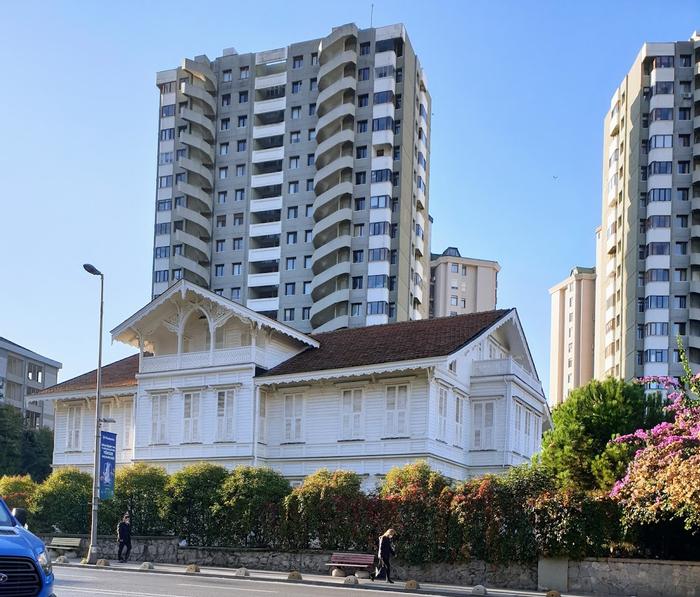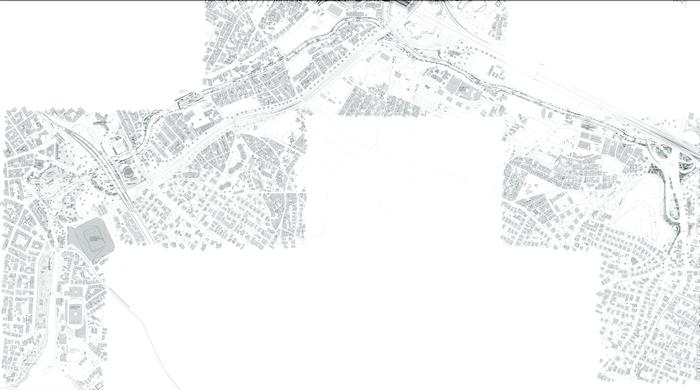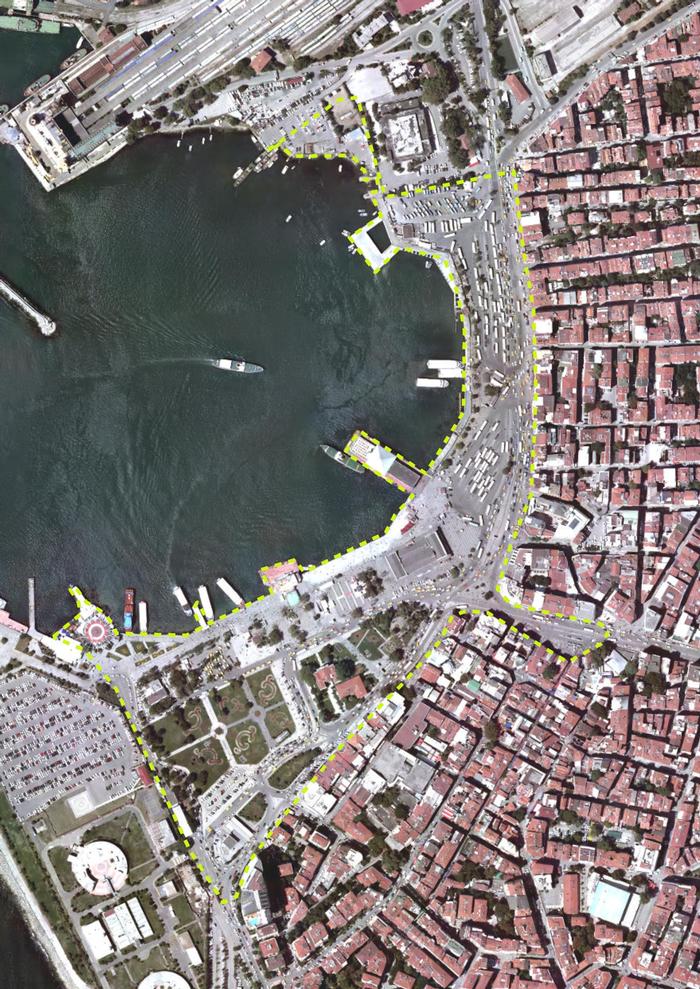[ID:4861] A Livable City for All GenerationsItaly A Livable City for All Generations
I remember visiting my grandparents’ house in Istanbul; in a city of millions, the house felt like a small island where the time was frozen. My grandpa had an accident a while ago while trying to get off a public bus, now he tried to avoid using them. At their age, my grandparents didn’t want to drive in the chaotic traffic of Istanbul, and the distances were far too great to walk, so their life was confined to the borders of their house. And my grandpa, who had been a doctor, a teacher, and a journalist in different parts of his life, slowly lost contact with the world and developed dementia, before passing away a few years later.
This shouldn’t be the fate of all senior citizens who dwell in big cities.
A City of Mists
Dementia is among the greatest risk factors for the aging population of the world. World Alzheimer Report 2021 cites dementia as the 7th leading cause of mortality globally (Barbarino, 2021, p. 17), while studies from Canada and Germany show dementia to be the number one reason people eventually need long-term nursing care (Oswald & Wachter, 2014, p. 70).
People with dementia experience memory loss typically starting with the most recent events, a condition triggered by degeneration of synapses in the brain for reasons yet to be fully understood (Heinig et al, 2014, p. 62). As their surroundings appear increasingly unfamiliar, a feeling of being lost takes over and people often express of a desire to go “home” (Fischer, 2014, p. 48). When used in this sense, home represents not only physical but an emotional place, somewhere they can feel safe and in control. For this reason, people with dementia have been known to go wandering, searching for places exist only in their memories.
Creating a sense of belonging therefore becomes extremely important for the well-being of people with dementia. As Kruse (2014, p. 54) argues, instead of being excluded from their familiar social context, they should have the opportunity to actively participate in it. This includes contributing to and shaping their social environment, interacting with people of all ages, and feeling jointly responsible for their communities. Aging in place, where older people continue living in their homes instead of moving into a special care facility, has been shown to be associated with better health (Hooyman et al, 2015, p. 310). It also creates value for the entire neighborhood, because as Ball (2012) puts it, difference between the needs of younger and older people is not a matter of kind but of degree.
While physical surroundings can provide a stable and comprehensible background for people with dementia, they should also be designed with flexibility and adaptability in mind so they can serve the changing needs of their users over time (Myllymaki-Neuhoff, 2019, p. 33). The aim should be creating options instead of solutions (Welter et al, 2009, p. 62), which can be achieved through active listening as their needs may not always match a younger person’s perception of them (Cranz, 2016, p. 6). This way, instead of talking “about” people with dementia, our approach becomes talking “to” them (Kruse, 2014, p. 58), and we can create communities shaped by each member’s unique input where all feel welcome and can exists with dignity. An example of this can be seen with the Scottish Dementia Working Group, an organization run by people with dementia, lobbying local politics to have their voices heard to create positive change in their communities (Sütterlin, 2014, p. 190).
A City of Blinds
My grandparents lived in the Kadiköy district of Istanbul, on the Asian side of the city which sprawls across two continents. Legend goes that Byzas the Megarian, founder of the ancient city of Byzantium, now known as Istanbul, was advised by an oracle to erect his city opposite “the land of the blind.” Byzas eventually chose the peninsula between the Bosphorus strait and the Golden Horn, across the strait from Chalcedon (today’s Kadiköy), implying that the residents of Chalcedon must have been blind not to see the beauty of this land and settle there instead (Sumner-Boyd & Freely, 2010, p. 2).
Kadiköy, the city of blinds, today houses the oldest population in Istanbul according to surveys, one in every five residents being above the age 65 (Istanbul Valiligi, 2019). With a total population nearing half a million (Sözcü, 2022), it is also a sizable community in its own right. Historically, though, Kadiköy has not always enjoyed the same popularity its more famous counterpart across the water did, its fortune turning only with the 19th century modernization movement in the Ottoman Empire (Kütükçü, 2018, p. 17). With ample open spaces and a favorable position near the river Kurbagalidere (“creek of frogs”), it became the natural site of choice for new, modern neighborhoods housing a cosmopolitan populace. Its star continued to rise after the founding of the Republic, and especially after 1950’s and the construction of new arterial roads that connected Kadiköy to the remainder of the city, its population grew exponentially.
Kadiköy’s newfound fortune, however, came at a cost. Kurbagalidere, for instance, became incredibly polluted and earned notoriety among Istanbulites for its horrid smell. High-rise apartment complexes got erected on what once was gardens of Ottoman era mansions to house the incoming masses. Kadiköy, along with rest of Istanbul, started suffering from terrible traffic, so much so that in 2021 the city earned the distinction for having the worst traffic congestion in the entire world with residents losing on average 142 hours in traffic every year (Tomtom Traffic Index, 2021).
Many of Kadiköy’s near half million inhabitants were immigrants from rural parts of Turkey, where traditional multigenerational households still persist to this day. When people brought up with this way of life move to big cities where the dominant residential typology is single family houses adopted from Western metropolises, composition of the family unit must change to adapt, with major implications for society at large, and for the position of the elderly within it. Older people, who traditionally enjoyed a revered position in the family and the society (according to one perspective due to ownership of land in agricultural societies [Sentürk & Altan, 2015, p. 13]), must invent new roles for themselves in a modernizing society. Other social factors like the increased participation of women in the workforce and children living geographically further away from their parents further amplify the need to reconsider living arrangements for the elderly in Istanbul.
Reflections, Remembrance and Remedies
Trials of big city living is nothing new for the elderly of Istanbul. In records dating back to 17th century, there is evidence of relocating neighborhood bazaars to improve ease of access for the old and the infirm, while 18th century records show a ban for porters to ride on their animals after unloading goods in order not to disturb the vulnerable people in pedestrian traffic (Erkan, 2020, p. 131). To address such issues, then as now, solutions we use must (1) be “locally-appropriate,” utilizing pre-existing and newly created resources in combination (Welter et al, 2009, p. 62); (2) support architectural standards with urban scale strategies to be cohesive and ensure access (Ball, 2012, p. 22); and (3) adopt an interdisciplinary approach to adequately respond to the many facets of the challenge. The neighborhood is a good scale for action in these efforts and Kadiköy, in our case, is ripe with potential.
The Mansions
As touched on earlier, one of the main ways of improving wellbeing of people with dementia is creating opportunities for social participation. Through intergenerational exchange, the elderly can also become valuable sources of knowledge for the younger population. For this interaction to take place, there is a need to create dedicated public spaces, ideally where people with dementia can have some agency shaping, so that a sense of familiarity and safety can be established. As also previously mentioned, Kadiköy historically is a neighborhood with many Ottoman era mansions, around which high-rise residential complexes were built. A number of these mansions survive to this day scattered across neighborhoods, some in use for various functions, others in derelict state and in poor upkeep (Image 1).
These relics of the city’s glamorous recent past can be repurposed to become lively community centers for today’s society. They can serve as meeting places for people from different generations to come together and engage in social contact. The historic backdrop these properties provide can be of particular significance for people with dementia, who yearn for the familiarity of the older times of which these mansions are a reminder. These community centers can also present the perfect opportunity for their voices to be heard in shaping the social environment of their local communities, so that the resulting spaces can be inclusive and accessible for all who reside in the neighborhood.
The River
Kurbagalidere, the “creek of frogs” Kadiköy was originally settled along, is the longest river on the Asian side of Istanbul (Imamoglu, 2020). After the industrialization of the city, Kurbagalidere suffered from high levels of pollution and became an avoided part of the town due to the smell and methane gas it produced (Dogan, 2015). After long-running efforts to clean its waters, areas near the mouth of the river have recently been opened to public as green spaces (Yesil Istanbul, 2022). However, this is a small piece of the municipality’s project to transform the entire length of the riverbank, which is yet to be realized.
The concept of “15-minute city” advocates creating neighborhoods where residents don’t have to travel further than a 15-minute radius on foot or on a bicycle in order to meet their everyday needs (Yeung, 2021). Hooyman et al (2015, p. 310), on the other hand, defines “life-space” as the physical distance one has to cover to complete their daily activities, and maintains for the elderly, wider life-space is associated with better physical and mental wellbeing. While these concepts may seem contradictory when viewed together, they can also be regarded as two perspectives on the same common-sense principle.
As already noted, Istanbul suffers from terrible traffic and its residents lose hours every year due to congestion. So, when you are travelling with a vehicle in Istanbul, 15 minutes may not take you very far. Equally for pedestrians, because much of the transportation infrastructure is built with car traffic in mind, travelling long distances on foot can similarly be a nightmare. This is because to achieve a 15-minute city, it is not enough to place the amenities at convenient locations; a big part of the job is ensuring all citizens, old and young, can get to those amenities within the given timeframe. Meaning, with the right transportation infrastructure, 15 minutes can actually represent a decent radius of life-space, while with poor connectivity, hours may not be enough to get to your destination. That’s why, especially for the elderly and individuals with limited mobility, we must think of ways to create safe pedestrian connections throughout the city.
While connecting a neighborhood of half a million residents may seem an insurmountable task at first, the solution to our problem may also be hiding in plain sight. The urban transformation project the municipality proposes for Kurbagalidere essentially creates a green corridor along the banks of the river which runs through and can potentially connect many neighborhoods (Image 2). Establishing this route as a pedestrian connection that is easily accessible for all Istanbulites can at a stroke dramatically increase the life-space for the elderly while ensuring within their 15-minute radius, they can access a good chunk of the city. The walkway along the river would also be fairly flat, which, in a city with many hills like Istanbul, would be a welcome relief for the elderly. Needless to say, the green spaces created would benefit the entire community regardless of age. To achieve these outcomes, NGOs must work to push government bodies to prioritize such projects.
The Square
In a city like Istanbul that is defined by its relationship with its surrounding waters, open public spaces are important elements not only for social integration of citizens but also for their contact with the nature. Kadiköy’s main square is situated along a natural port (which was filled in to create more public spaces) where passenger ferries frequently come and go. Situated right across the historic peninsula of Istanbul across the Bosphorus, it also has some of the best views the “city of blinds” has to offer. However, on a busy day you may be hard-pressed to find members of Kadiköy’s sizable elderly population here, as it is also a place not easily accessible for many in the community.
To facilitate the flow of people pouring into Kadiköy’s commercial center which lies next to the square, bus lines from various parts of the city converge and terminate in Kadiköy square. Terminal stop for these lines is situated right next to the water, taking up almost half of the open space and rendering this area practically unusable for pedestrians (Image 3). Constant flow of public buses in and out of this area worsens the already busy traffic and makes it difficult for especially the more vulnerable in the community to cross the road to access the existing public space. On the opposite side of the bus stops, there is an enormous car park which further wastes precious seaside real estate that could potentially serve as green spaces for the community (Image 4).
It is clear that an intervention is needed to mend to problems of this area and maximize its potential to serve the needs of the public. The solution could be similar to that of the Taksim Square on the European side, which suffered from similar problems and was pedestrianized by moving the bus stops and a portion of the car traffic underground. To this end, the municipality has opened a competition to redesign the Kadiköy square and a proposal which replaces the bus stop and the car park with green areas was accepted. This was in 2021, and a substantial change to the square is still yet to be made. A similar project was introduced to public in 2012, which was later shelved and forgotten (Çelebi, 2012). In order to ensure the latest project will not share the fate of its failed predecessor, people of Kadiköy must rally together and make sure their voices are heard through political channels.
Other metropolises around the world are already taking steps to create more human-oriented cities for their residents. Barcelona’s “superilles” or “superblocks” for example, aim to create more pedestrianized zones in the city by restricting car traffic between certain blocks (Postaria, 2021), while Bogotá’s “barrios vitals” or “vital neighborhoods” divert traffic from local streets to arterial roads to create more sustainable and resilient neighborhoods (Targa et al, 2022). Istanbul can benefit from such initiatives too, for the sake of its elderly, who was once young, and for the sake of its youth, who will one day grow old; so that instead of a city of mists or a city of blinds, it can become a livable city, for all generations.
List of References: https://docs.google.com/document/d/1Y-15hWXrQtZXViG5RQmSE-2LoO1qJNh3vvjuTYZGXao/edit?usp=sharing
If you would like to contact this author, please send a request to info@berkeleyprize.org. |




